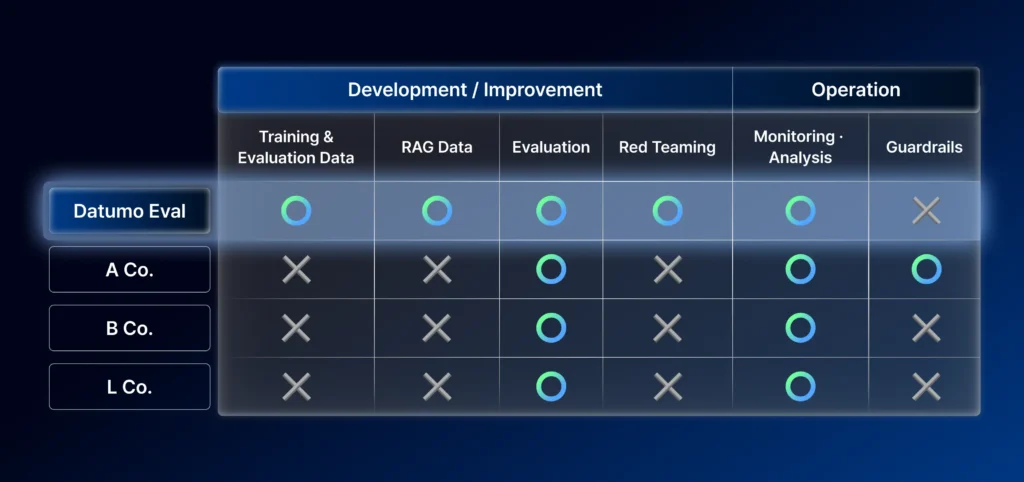Artificial intelligence has now become a core tool for many companies.
However, it is still exposed to various risks, including hallucination, bias, and prompt injection attacks. According to Infosys BPM, a company that manages business processes, a 2024 survey showed that more than 40 percent of respondents identified the “lack of explainability” in AI models as the greatest risk in AI adoption.
In addition, as cases of deepfakes and impersonation attacks using AI continue to rise, ensuring AI reliability and safety has become one of the biggest concerns across industries.
Interest in AI safety is higher than ever. AI safety is not just a technical issue but a key factor that determines business trust and sustainability. Any company seeking to adopt AI, regardless of size or field, must fully understand why AI safety matters and establish a systematic strategy to secure it.
Core Elements of AI Safety
So, what should we consider when building trustworthy AI?
AI safety refers to designing systems that behave predictably and do not cause harmful actions or outcomes. Let’s look at the key elements in detail.
Robustness:
An AI model must operate consistently and stably under various inputs and changing environments. It should be resilient enough to avoid malfunctions even when faced with extreme data or unexpected conditions.
Fail-safes and Human Oversight:
When errors or uncertainty occur, the system must be able to switch to a safe mode or request human intervention. Building such mechanisms is crucial to maintain control and prevent harmful outcomes.
Verification and Testing:
Comprehensive evaluation of an AI model’s performance and limitations is essential. Testing during the development phase across diverse scenarios helps identify and correct unpredictable algorithmic behaviors or bugs early.
Data Security and Privacy:
Protecting the data that AI systems handle and ensuring strict privacy safeguards are fundamental to safe AI operation.
Fairness and Ethics:
AI must make unbiased and fair decisions. Ethical considerations should be integrated throughout development, including protecting personal privacy, ensuring transparency in results, and clarifying accountability. Establishing organizational guidelines and a culture that align AI use with company values and social norms is equally important.
A balanced approach that addresses technical, ethical, and social dimensions is essential. Only by building predictable and reliable AI systems can both companies and users truly benefit from the technology.
Potential Risks for Companies
There are various types of risks that companies may encounter when implementing AI in real-world operations. Let’s look at some representative scenarios.
Security Vulnerabilities and Data Leaks
As AI adoption grows, so does the risk of internal data exposure. According to a report by Netskope, cases of employees uploading or accessing company data through personal AI accounts have increased more than thirtyfold in just one year. Even when the data contains sensitive information such as source code or confidential documents, personal accounts are difficult to track, making supervision and prevention challenging.
IBM reports that among companies that experienced AI-related breaches, 97 percent lacked proper access control. As a result, 60 percent of AI security incidents led to data leaks, while 31 percent caused service disruptions.
Information Errors and Hallucination
Generative AI can produce information that sounds highly convincing but is actually false. Such hallucination can lead to user confusion or poor decision-making, and in severe cases, legal disputes when AI-generated misinformation causes damage.
Bias
When bias is embedded in training data, AI systems can produce discriminatory outcomes. For example, some AI models have generated text or images that depict doctors as men and nurses as women, reinforcing gender stereotypes. On the other hand, attempts to overcorrect bias can also lead to distortion. In one widely discussed case, an AI image model produced a “1943 German soldier” image including Black and Asian individuals, ignoring historical accuracy in an effort to appear diverse.
Regulation and Legal Compliance
AI-related laws and regulations are evolving rapidly worldwide. In 2024 alone, multiple new laws were introduced focusing on AI risk management and safety. Noncompliance can result in significant penalties, fines, or restrictions on business operations.
Neglecting data privacy can expose companies to heavy fines, and legal disputes over AI-generated content and copyright are also increasing. There have been growing cases of intellectual property conflicts involving data used to train AI models—such as disputes between media outlets and AI companies over the use of news data—as well as controversies surrounding the unauthorized synthesis of celebrities’ voices or likenesses.

Stay ahead in AI
Datumo Eval: AI Safety Platform

AI red teaming strategies. Source: Google
The Datumo Eval platform goes beyond simple performance measurement to enable comprehensive verification of AI trustworthiness and safety.
- Custom evaluation criteria and automatic data generation: set your desired metrics and automatically generate realistic test questions based on company documents.
- Automated response evaluation and dashboard analytics: automatically assess AI-generated answers against those criteria and review results via a visual dashboard.
- AI red team testing: automatically generate adversarial prompts to probe model vulnerabilities and run iterative tests.
- Professional consulting: experts support you from evaluation design through execution and analysis.
One of the most essential capabilities for businesses in the AI era is the ability to use AI reliably and responsibly.
Datumo’s AI safety evaluation platform, Datumo Eval, helps companies adopt AI with confidence by providing a structured way to assess and strengthen model trustworthiness.
If you’re wondering how to best integrate the platform into your workflow, our consulting service can guide you through methodology design and evaluation criteria tailored to your organization. Feel free to reach out anytime.



